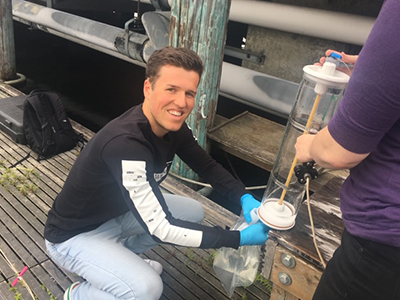SALISH SEA PLANKTON AND WATER CHEMISTRY
Investigating How Salish Sea Plankton Respond to Environmental Changes
Metagenomic fluctuations of zooplankton and ichthyoplankton communities in the Salish Sea and their association with water chemistry.
SALISH SEA PLANKTON AND WATER CHEMISTRY
Metagenomic fluctuations of zooplankton and ichthyoplankton communities in the Salish Sea and their association with water chemistry.
Julie Keister, University of Washington, School of Oceanography
Carol Stepien, NOAA PMEL

Washington Sea Grant researchers will use a new technique, metagenomics, to study how zooplankton and larval fish respond to physical and biological changes in the Salish Sea. This research will shed light on the composition, diversity and relative abundance of Salish Sea plankton communities and their response to changing environments, while developing cutting-edge technologies that will advance future marine research.
Zooplankton and larval fish are important prey for larger invertebrates, fishes and marine mammals. They are also some of the most vulnerable species to ocean acidification and other environmental threats, including hypoxia and warming. Using a new technology called metagenomics—the study of genetic material collected from the environment—researchers will advance understanding of how Salish Sea plankton communities respond to physical and biological changes.
In 2018, the team successfully began linking changes in ocean chemistry to composition, diversity and relative abundance of zooplankton and larval fish in the Salish Sea. They began developing prototypes for sequencing DNA. The genomic techniques being developed can identify more species in regional planktonic communities and collect samples faster than traditional taxonomic methods.